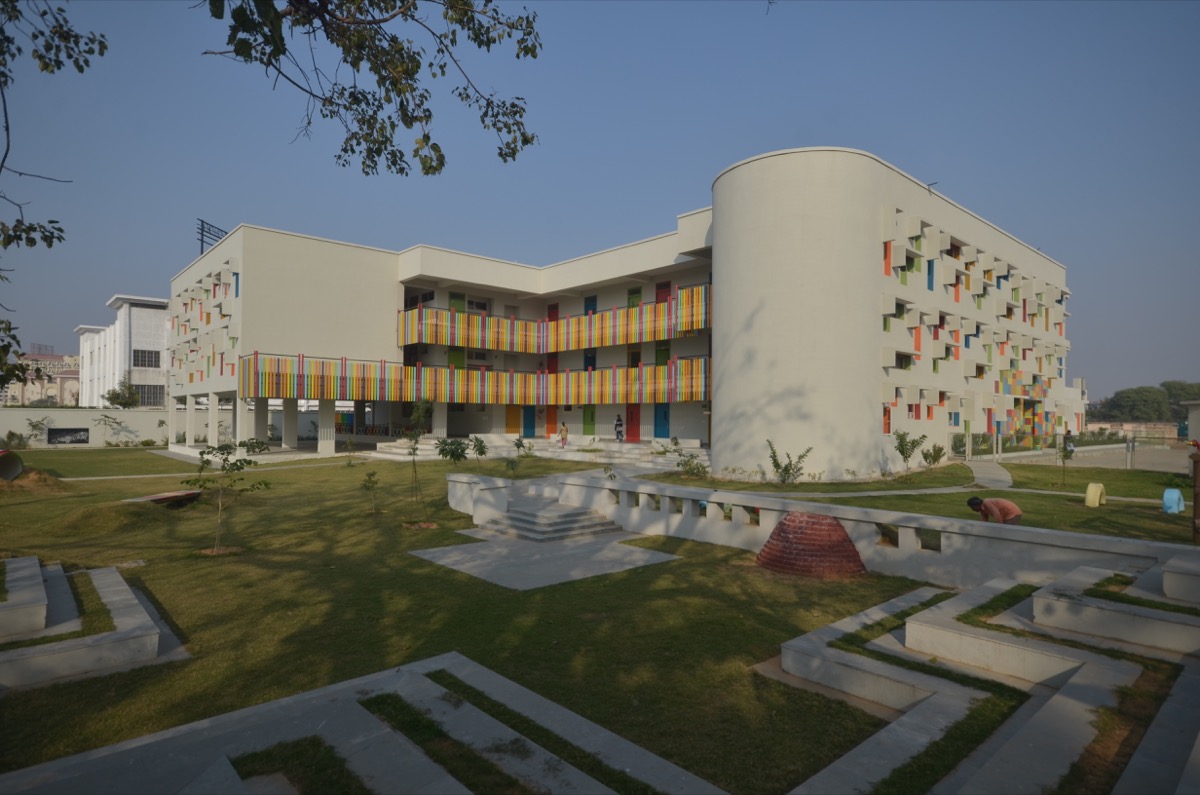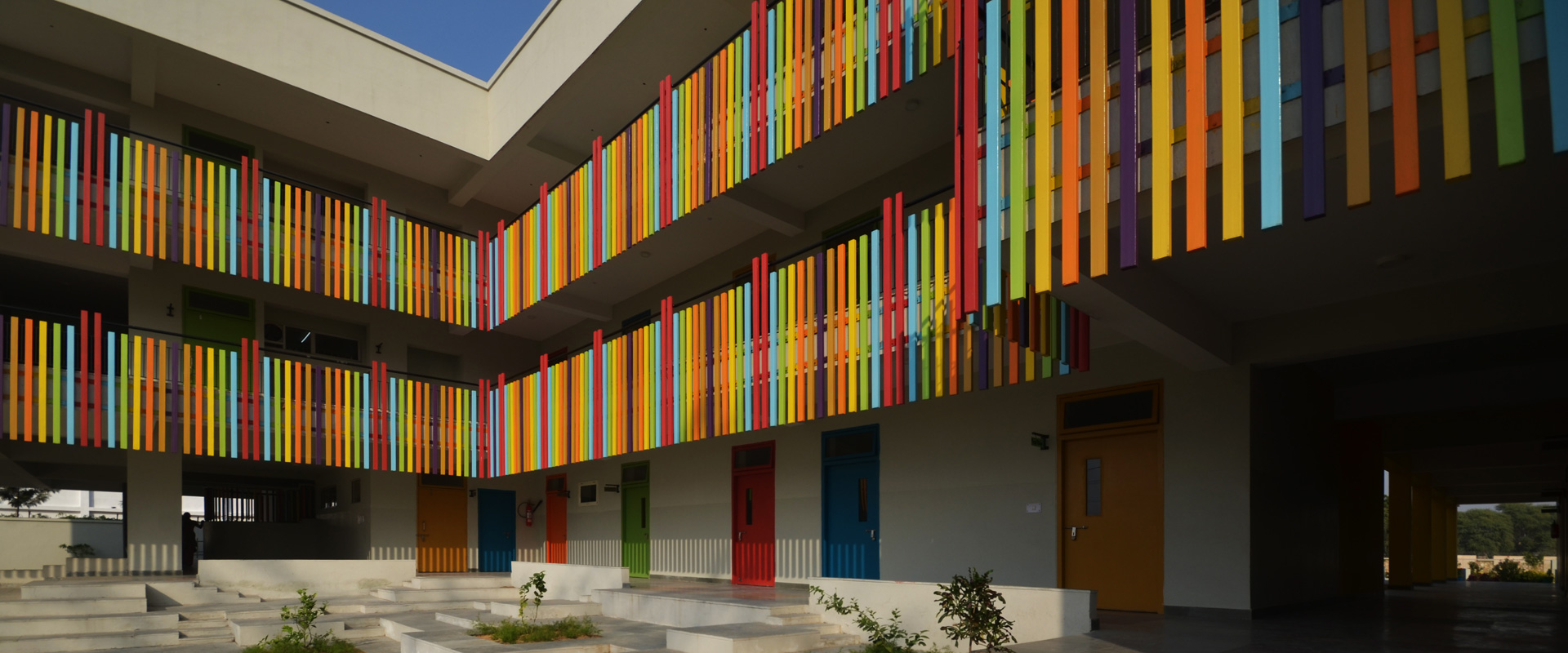Project Facts:
Location: Bhiwadi, Haryana, India.
Design team: Neha Kulkarni, Nirmal Kulkarni, ShubhangiGoswami, PrabhashDhama, SurbhiRastogi, Saugoto Bose
Gross floor Area: 2717.05sq.m.
Usage: Institutional
Floor: 3 floors
Structure: Reinforced Concrete with cavity brick wall
Exterior Finishing: TexturePainted
Status: Foundation Complete as of Oct 2015
Client: Modern Public School, Bhiwadi, HARYANA.
Structural Engineers: Girish Wadhwa, GTWCSE
Public Health Engineers: Deepak Khosla
Photographs and Text: AUM Architects

Located in Bhiwadi, Rajasthan, this school, one from the body of Modern Public Schools had a strong brief of an underlying principle of operation which gives vital importance to a child-friendly atmosphere and impetus to a constructive learning environment. With this as the premise of the design inception, the project was approached from a very fresh perspective of developing a rich, creative built environment. The concept of this multivalent approach was to get a coalesced space where play and learn blends into one dynamic paradigm. The design was explored at various levels of planning, organisation, detailing, levels, opens and enclosures, circulation which all focused to experimenting for a holistic education.
The idea thread evolved on the Reggio Emilia approach which roots from the Italian grounds by a teacher. It propagated the thought of child’s knowledge of a hundred languages innately which could be directed through an innovative control over the directional growth. The foundation of this is primarily built in Preschool and Primary education. Gathering inspiration from experimental built projects across the world which have flourished on similar ideologies, the design team started finding and realizing the potential of the site and saw some interesting design opportunities. With the plot area of 7762 sq.m., the site gives strong accessibility from the two main roads flanking the longer sides of the plot. The context was majorly empty and thus provided the huge scope of experimental intervention, not bound by any complex implications from the surrounding built.

The school building was planned to understand the distinct behavioural patterns of the different age groups in this primary school. This study of difference in the activity styles of these children, the spaces were planned according to their compatible scale. Multiple design moves were made to rescale, revitalize and invigorate the green open play spaces of these age groups. The setback of the site was fully exploited to get a large playground cum assembly area within an envelope of a peripheral dense tree cover. After debated discussions, articulation and design modelling from different perspectives of views, the sales achieved of these open areas was to match the relatable scale of a child and his involvement with it. The playful design elements added to enrich these spaces again underwent in numerous options by understanding it from the visual 3D volumetric study.
These options were tested and tried spanning on aspects like materials, geometries, edges, scale etc which could boost a child’s imagination and help in expanding his thought process. These elements like the play/game wall in the courtyard adjusted to a scale of common collective space, were made a part of the design scheme with a physical dimension of a forming an active transient space.
The circulation spaces were treated individually for their importance in the interaction between the classrooms surrounding them which create some interesting light and shadow enhancement and small components like railings with the play of colours and construction details of how they could be felt and moved by children. Fenestration played a major key role in the exploration of the guiding concept of the school. The windows and vents were overlaid on the gaming theory of Tetris. These windows were designed and organized on the principle grid of movement of play blocks and their possible (hypothetical in this case) of interlocking if let to move down upon gravity. The idea was played around with layered stages of understanding of the game like module sizes, repeated patterns and primary colours. This was then broken down to the practical correlation to construction of open able and fixed windows and further diffused and translated to their detailing.


















